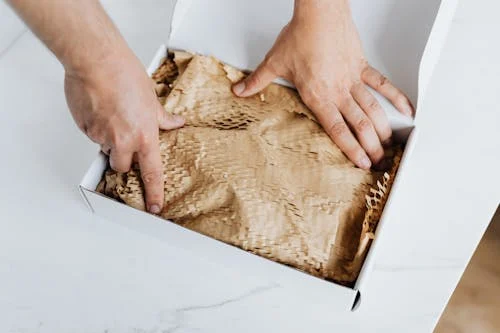
How to Ship Artwork | A Detailed Guide
Share
Shipping artwork requires more than just a box and some tape. Proper care, the right materials, and attention to detail can make all the difference in ensuring that your art reaches its destination unscathed. This guide is designed to walk you through the steps necessary to ship different types of artwork, from paintings to sculptures, both domestically and internationally.
Understanding the Type of Artwork You're Shipping
Before you begin, it's essential to understand what type of artwork you're shipping, as each requires unique packaging techniques and materials.
- Paintings:
Paintings, especially those on canvas or framed, can be delicate. They are susceptible to environmental conditions like moisture and physical damage during transit.
- Canvas Paintings:
Canvas paintings are often exposed, which means extra care should be taken to avoid scratching or denting. Use acid-free paper to cover the surface.
- Framed Artworks:
Framed pieces, particularly those with glass, need additional protection. Corner protectors and glass tape are essential to keep the frame intact.
- Rolled Art:
For unframed pieces or prints, rolling the artwork in a tube is often the safest method of shipping. Make sure to secure the artwork inside the tube with protective layers.
- Sculptures:
Sculptures vary in size, weight, and material, which influences how they should be packed and shipped.
- Ceramic Sculptures:
Ceramic is especially fragile, so custom crates with plenty of padding are often required. Bubble wrap and foam are essential for ensuring the sculpture doesn't move inside the crate.
- Metal Sculptures:
While sturdier than ceramic, metal sculptures can still be scratched or dented during shipment. Use protective foam to cover any sharp edges.
- Fragile or Delicate Sculptures:
Fragile sculptures, especially those with intricate designs or protruding elements, require custom packaging to avoid breakage.
- Photographs and Prints:
Photographs and prints are generally less bulky but still need protection from bending and creasing.
- Fine Art Prints:
Fine art prints should be shipped flat if possible, using rigid packaging to prevent any bending.
- Framed Photographs:
Framed photos, much like framed paintings, need corner protectors and cushioning to avoid damage to the frame or glass.
- Rolled Prints:
If shipping prints rolled, use a sturdy tube with plastic end caps to protect the artwork from moisture and crushing.
Choosing the Right Packaging Materials
The right packaging materials are critical to the safe arrival of your artwork. Make sure to use materials that fit the specific needs of the type of artwork you're shipping.
-
Selecting the Right Box:
For small to medium-sized pieces, double-walled boxes provide the best protection. For larger or heavier pieces, consider using wooden crates or specialty boxes designed for art.
-
Importance of Bubble Wrap and Foam:
Bubble wrap acts as a buffer against shocks and vibrations during shipping. Foam sheets or foam corners provide additional protection, particularly for framed artwork.
-
Using Glassine Paper for Paintings:
Glassine paper is a must for paintings, as it prevents dust, moisture, and other contaminants from reaching the surface. Wrap the painting fully in glassine before adding bubble wrap or foam.
Prepping Your Artwork for Shipment
Once you've gathered your materials, it's time to prepare your artwork for shipment.
1. Wrapping the Artwork
- Acid-Free Paper for Paintings:
Start by wrapping the artwork in acid-free paper to protect the surface from scratches and dust.
- Corner Protectors for Framed Art:
Use foam or cardboard corner protectors to shield the edges of framed art from dents and dings.
- Wrapping Sculptures for Stability:
For sculptures, bubble wrap or foam sheets should be used to wrap the entire piece securely. Ensure that no part of the sculpture is exposed.
2. Adding Padding for Extra Protection
- Using Foam for Framed Art:
Place foam sheets around the artwork to provide a cushion against external impacts.
- Bubble Wrap for Sculptures:
Bubble wrap is essential for sculptures, especially those made of fragile materials like ceramics or glass.
- Cushioning the Bottom and Top:
Make sure to add cushioning at the bottom and top of the box or crate to prevent any movement inside the packaging.
3. Custom Crates for Sculptures and Fragile Art
Some artworks, particularly sculptures or large, delicate pieces, require custom crates for safe transportation.
When to Use a Custom Crate?
Custom crates are ideal for shipping large or highly valuable sculptures and artworks. If the piece is heavy or has irregular dimensions, a crate is the best option.
Building a Crate for Sculptures
Wooden crates can be built to fit the exact dimensions of the artwork. Make sure there is enough space inside for padding to avoid any movement.
Packing Fragile Art Inside the Crate
Once the artwork is placed inside the crate, fill any empty space with foam or cushioning materials to ensure the art doesn’t shift during transit.